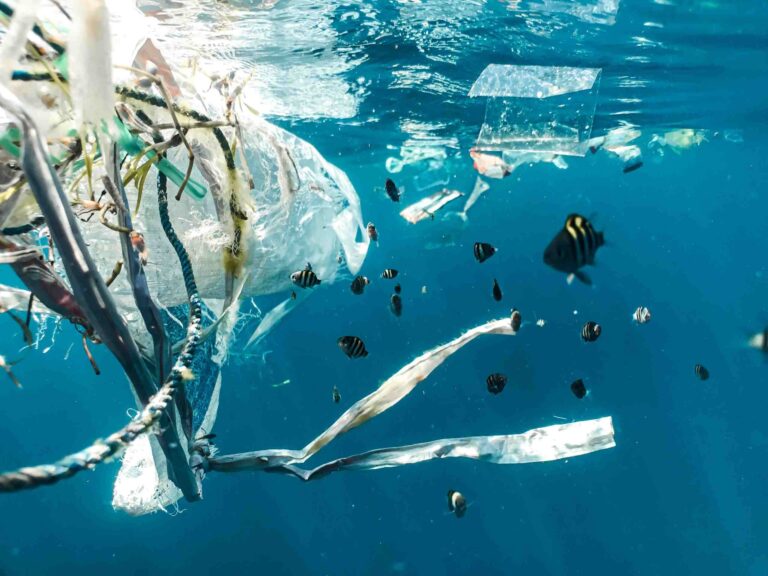The Great Pacific Garbage Patch is only the best known and largest deposit of ocean trash, and its cleanup has become a focal point of efforts to address the global problem of ocean plastic pollution.
Here’s an article to give you knowledge about all you need to know about the Great Pacific Garbage Patch and solutions to treat it.
Table of Contents
The Great Pacific Garbage Patch: what is it?
The North Pacific Ocean is home to a large concentration of trash, known as the Great Pacific Garbage Patch (GPGP). This area of the ocean is only one of many that have become a garbage dump due to human activity. The term “marine debris” refers to trash that floats off to sea or accumulates in other big bodies of water. There is no single location in the North Pacific where this debris is most prevalent.
It’s tough to make an exact guess about the trash patches, including their size, composition, and placement. Many of the trash particles are microplastics, which are too small to be seen by the naked eye. Up to 51 trillion microplastic particles float in our waters, whereas larger items such as fishing nets or plastic shopping bags are the most obvious components of ocean debris.
Plastic in the ocean: the main causes
Some of the plastics we make inevitably find their way into the ocean, whether by accident, design, or poor garbage disposal. Microbeads in facial cleansers are an example of a plastic waste product with a specifically designed small size.
Some very little particles of plastic are actually fragments of much larger plastic objects. There will always be plastics. Over time, exposure to sunshine and other environmental variables (such as waves and large storms) causes them to deteriorate until they are significantly diminished.
There are two main factors that contribute to ocean trash. That’s right, we’re talking about both on-land and in-water resources here. An insufficient garbage disposal and management system, industrial activity, building, illicit dumping, and beachgoers all contribute to the problem on land.
Nautical activities, the fishing industry, and aquaculture are all ocean-based sources of plastic garbage.
The environmental impacts of plastic waste in the ocean
To what extent plastic trash in the Great Pacific Garbage Patch harms the environment is directly proportional to its size.
While larger waste floats on or near the surface and impacts larger marine species, tiny plastic particles drift into the water column toward the seafloor, where they begin to accumulate in the food chain at the bottom and work their way up to the top, where we humans eventually consume them.
Both the longevity and the toxicity of microplastics are major concerns. Although plastic made from fossil fuels isn’t recyclable, it does break down into increasingly smaller pieces as it’s exposed to sunshine in a process called photodegradation.
When plastics afloat or close to the ocean’s surface are heated by the sun, they give off methane and ethylene. These are two powerful greenhouse gases that contribute to the effect of global warming.
Colorants and chemicals are also released during photodegradation, and they have been connected to a wide range of environmental and health issues. There were microplastics in the stomachs of 25% of predatory fish sampled from China’s Xiangxi River. Animals’ reproductive success may be negatively impacted, and human health may be jeopardized, if they ingest microplastics.
Great Pacific Garbage Patch: the solutions to treat it
1. Recycling
Rather than cleaning up the mess after the fact, it is preferable to prevent plastics from reaching the waste stream in the first place. Specifically, we need to double the existing rate of plastic recycling (9% of all plastics). And drastically cut back on the 90% of plastics that are only used once. In addition to encouraging more recycling, taxing plastics companies could help reduce plastic pollution.
Reducing the amount of plastic that ends up in waterways can be achieved through expanding the market for recycled plastics and increasing the incentive to recycle them. Increasing the market price of recycled plastic has been shown to enhance recycling rates, especially in developing nations.
2. Efforts to clean up
Cleanup efforts, such as those held as part of World Environment Day, are taking place all over the world in response to the rising media attention on marine plastic pollution. Their goal is to prevent trash from rivers and beaches from making its way into the ocean.
Other international initiatives to clean up the oceans and cut down on litter is the Clean Seas campaign, which is being led by the United Nations Environment Programme. Ocean Cleanup is probably the most well-known attempt.
3. Restricting manufacturing
Cleanup can help minimize plastic pollution, and recycling can cut down on plastic trash. But neither of these measures can keep up with the explosive growth in plastic manufacture. Which has gone from 1.5MT (million tons) in 1950 to 348MT (million tons) in 2017. Just like with the climate crisis, the problem begins with the factory.
Ocean pollution is a major problem
As a visible representation of the global plastic catastrophe, the Great Pacific Garbage Patch is a disturbing sight to behold.
To truly defeat plastic pollution, as the UN General Assembly has proclaimed, “we need to totally rethink our approach to design process, making, and consuming plastic items”. This means doing more than just cleaning up our oceans of plastic trash and recycling more of our plastics.
Read also: Single-use plastic, the countries that have banned it












